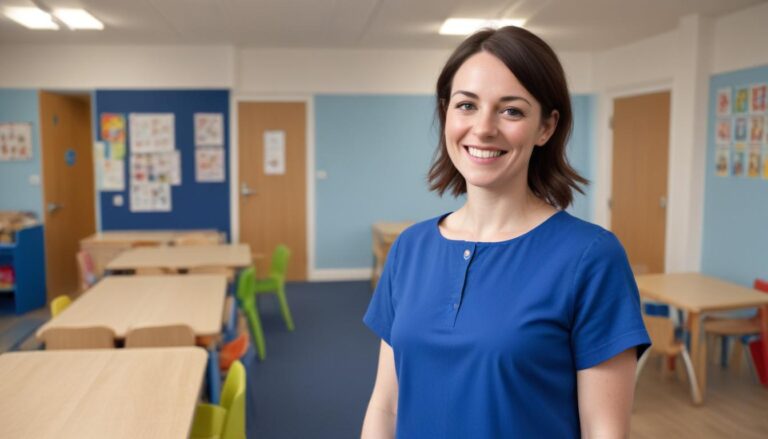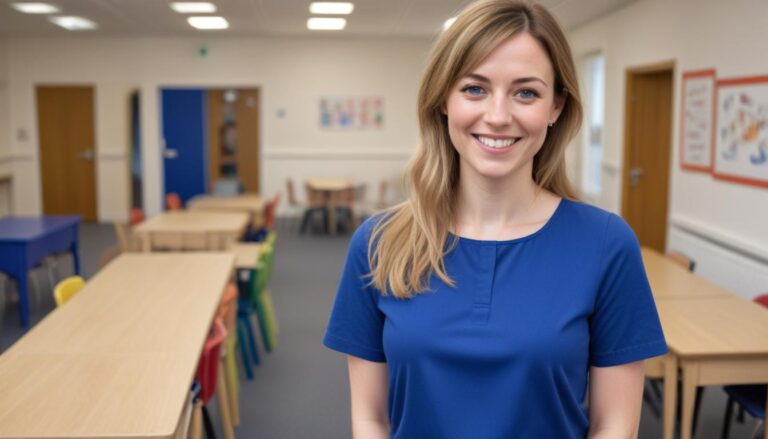This guide will help you answer 2.1. Describe ways in which a calm and nurturing environment can be created to promote the wellbeing of children and young people.
Creating a calm and nurturing environment for children and young people is essential for their mental and emotional wellbeing. By creating a positive atmosphere, you can help children feel safe, valued, and supported. This, in turn, encourages personal growth and development. In this guide, we cover some of the various effective ways to establish such an environment.
Consistent Routines
Establishing predictable routines provides children with a sense of security. A structured day helps them understand what to expect, reducing anxiety and stress. Routines might include scheduled meal times, play times, and quiet times.
- Consistency in daily activities
- Clear expectations communicated
- Involvement of children in planning activities
Having a balance between structured and flexible activities allows the child to feel secure while also exploring their interests.
Encouraging Open Communication
Facilitate open and honest communication to make children feel heard and valued. Encourage them to express their feelings and thoughts without fear of judgement. This builds trust and strengthens relationships.
- Active listening
- Responding to concerns empathetically
- Encouraging children to share their perspectives
Being available and approachable ensures children know they have a trusted adult to turn to in times of need.
Designing a Safe Physical Space
The physical environment plays a vital role in creating a nurturing atmosphere. The space should be safe and welcoming, designed to cater to the needs of children.
- Furniture arrangement that allows free movement
- Safety features like non-slip mats and covered power sockets
- Access to natural light and ventilation
Meaningful decorations and displays can also personalise spaces, making them more welcoming.
Promoting Positive Behaviour
Reinforce positive behaviour through praise and encouragement. Recognising good behaviour supports children in repeating these actions and boosts their self-esteem.
- Verbal praise for positive actions
- Reward systems that acknowledge effort and improvement
- Setting achievable goals and celebrating their attainment
This helps in instilling a sense of achievement and pride in children.
Inclusive and Diverse Practices
Celebrating diversity and inclusion is key to a nurturing environment. Implement practices that respect and celebrate differences in culture, language, and background.
- Inclusion of materials reflecting various cultures
- Celebrating festivals and holidays from different cultures
- Language support for children with diverse linguistic backgrounds
This inclusion promotes a sense of belonging and respect among all children.
Encouraging Play and Creativity
Play is important for a child’s development. Providing opportunities for creative play allows children to express themselves and explore their world.
- Access to art supplies, musical instruments, and imaginative play items
- Outdoor play spaces for physical activity
- Unstructured playtime for creative exploration
Creativity stimulates a child’s imagination and fosters problem-solving skills.
Supporting Emotional Development
Teach and model healthy emotional responses. Encourage children to identify and manage their emotions effectively.
- Conversations about feelings and emotions
- Role-playing scenarios to practice empathy and response
- Support from professional counsellors if necessary
Help children build emotional resilience by supporting them through challenging times.
Providing Supervision and Guidance
Supervising children is vital in providing safety and guidance. Effective supervision ensures children are safe and supports their development.
- Adult presence during play and activities
- Guidance during conflict resolution
- Intervening when behaviour becomes harmful
Supervision provides opportunities to guide children through social interactions.
Creating a Sense of Community
Build a team spirit among children to make them feel part of a community. Encourage cooperative play and teamwork.
- Group activities that require collaboration
- Celebrating group achievements and milestones
- Peer mentoring and buddy systems
Having a sense of belonging strengthens social bonds and builds self-esteem.
Modelling Positive Relationships
Adults should model positive and respectful relationships. Children learn behaviours and norms by observing the adults around them.
- Demonstrating respect, kindness, and fairness
- Dispute resolution in a respectful manner
- Building positive interactions with parents and caregivers
Adults serve as role models, and positive behaviour sets a standard for children.
Supporting Physical Health
Physical well-being supports mental health. Encourage an environment promoting active living and healthy choices.
- Access to nutritious snacks and meals
- Encouraging regular physical activity
- Educating on the importance of health and well-being
Physical health is linked to improved mood and overall well-being in children.
Implementing Mindfulness Practices
Introduce mindfulness techniques to support relaxation and focus. Mindfulness helps children manage stress and regulate emotions.
- Breathing exercises and relaxation techniques
- Mindful activities like yoga or meditation
- Quiet spaces designated for reflection
Mindfulness nurtures a child’s ability to maintain calm and focus during stressful situations.
Conclusion
Creating a calm and nurturing environment involves various strategies focusing on the emotional, physical, and social needs of children. By establishing a secure and encouraging space, children are more likely to thrive and develop positively. Each child’s needs are unique, and a flexible approach allows caregivers to best support their individual journey.
Subscribe to Newsletter
Get the latest news and updates from Care Learning and be first to know about our free courses when they launch.







